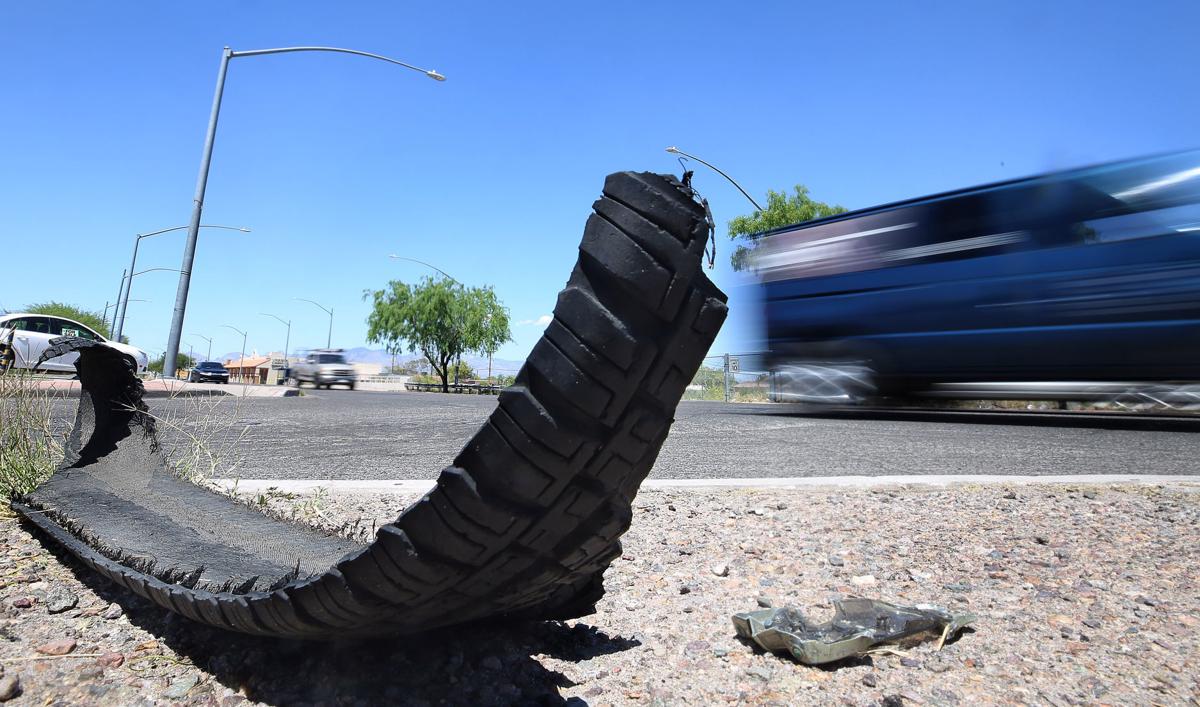Broken glass. Tires. Bumpers.
After a crash, weтve all seen how parts from mangled vehicles can disrupt travel and become threats to other cars trying to get around the debris.
And with 11,707 reported crashes in Pima County last year, according to the УлшжжБВЅ Department of Transportation, that can result in a lot of roadway obstructions.
When authorities respond to these crashes, itтs not just victims that are important to take care of т itтs crucial that any impediments be removed from the roadway.
In УлшжжБВЅ, that process of removing those hazards takes the involvement of several different entities.
The onus to clean up is usually on the tow-truck companies, according to Officer Frank Magos, a УлшжжБВЅ Police Department spokesman who previously worked as a patrol officer.
People are also reading…
тOnce the tow company shows up, theyтre responsible for cleaning up the debris in the street. Usually, the tow-truck company will take all that stuff and chuck it onto the truck,т Magos said.
Magos added that some people find their own way to tow their vehicle, possibly with help from a friend. тThereтs nothing really set in stone as far as that goes, itтs pretty much just donтt leave your trash behind.т
In many collisions, УлшжжБВЅ police use Garyтs Towing. The company responds to scenes equipped to remove any vehicles and clear the rest of the road.
тMore than likely thereтs hardly anything thatтs usually left,т a company dispatcher said Friday.
тBut letтs just say itтs dark out, and something does end up accidentally left behind. As soon as we are made aware that there was something left behind, we do return to the scene as fast as physically possible and fix what has been wrong.т
But what if some debris goes unaccounted for during the cleanup to get streets reopened for drivers, bicyclists and pedestrians? Itтll probably be УлшжжБВЅ police that get the call to follow up .
тUsually itтs TPD that gets the callback, somebody will say to come back and clean it up,т Magos said. тThen theyтll decide if the tow-truck company or a city street sweeper should come clear the scene.т
Sometimes large amounts of glass can be cleaned by those city street sweepers, if traffic detectives choose to call one in, Magos said.
The УлшжжБВЅ Fire Department may respond to put down sawdust to soak up vehicle liquids that can remain on the streets. Thatтs after taking care of anyone who has been injured.
And city street and maintenance crews are called if a crash involves УлшжжБВЅ infrastructure, according to Michael Graham, a spokesman with the УлшжжБВЅ Department of Transportation.
Graham highlighted how the responsibility for cleaning up the debris would fall either on the city crews or on the responding tow-truck driver after a crash investigation.
тIt would be us if the crash took out a tree and the tree fell into the road,т Graham said. тThen we have people on standby, who cover 24/7, they would get called out to go cut the tree up and then make sure to get it out the way.
тSame thing if an accident takes out a traffic signal pole, then our standby unit gets called and they would go handle the traffic pole being in an intersection in the roadway,т said Graham.
Down the Road
тЂ Public meetings about Interstate 11: The УлшжжБВЅ Department of Transportation is hosting two public hearings in the УлшжжБВЅ area this month about Interstate 11.
The first is May 8 at the УлшжжБВЅ Convention Center ballrooms, 260 S. Church Ave., from 3 to 8 p.m.
That will be followed by a May 11 hearing in the Marana High School cafeteria, 12000 W. Emigh Road, from 11 a.m. to 4 p.m.
тЂ Open house for information about Houghton Corridor project: The УлшжжБВЅ Department of Transportation is inviting the community to an open house to learn about the progress of the Houghton Road Corridor improvement project on May 16, from 6 p.m. to 7:30 p.m. at Secrist Middle School, 3400 S. Houghton Road. Information will be available about the projects along the 13-mile corridor from 22nd Street to Interstate 10.













